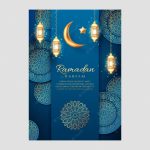Captivating Ramadan Mehndi Designs: Unleash Your Creativity With Our Stunning Collection Now!
Ramadan Mehndi Designs: Celebrating the Spirit of the Holy Month
Introduction
Dear Ramadhan enthusiasts and lovers,
1 Picture Gallery: Captivating Ramadan Mehndi Designs: Unleash Your Creativity With Our Stunning Collection Now!

As we enter the holy month of Ramadan, it is a time for reflection, prayer, and fasting. It is also a time for celebration and expressing our joy through various customs and traditions. One such tradition is the art of Mehndi, or henna, which holds a special place during Ramadan. In this article, we will explore the significance of Ramadan Mehndi designs and how they add beauty and meaning to this auspicious time.
What are Ramadan Mehndi Designs?

Image Source: pinimg.com
Ramadan Mehndi designs are intricate patterns and motifs that are created on the hands and feet using henna paste. These designs are a form of temporary body art and are typically applied during Ramadan to celebrate the holy month. The designs often feature traditional symbols, such as crescent moons, stars, and floral patterns, which hold deep cultural and religious significance.
Who Uses Ramadan Mehndi Designs?
Ramadan Mehndi designs are embraced by Muslims around the world, regardless of age, gender, or nationality. Men, women, and children all participate in this beautiful tradition, as it is a way to express their devotion and celebrate the spirituality of Ramadan.
When are Ramadan Mehndi Designs Applied?
Ramadan Mehndi designs are typically applied in the days leading up to Ramadan and throughout the holy month. Many people choose to apply Mehndi on special occasions, such as iftar gatherings, Eid celebrations, or during Taraweeh prayers. Some individuals also opt to have Mehndi applied on all or specific nights of the last ten days of Ramadan, known as Laylat al-Qadr.
Where Can You Find Ramadan Mehndi Designs?
Nowadays, Ramadan Mehndi designs can be found in various places. From specialized Mehndi salons to online platforms and even DIY tutorials, there are plenty of resources available for those who wish to adorn their hands and feet with these beautiful designs. Additionally, during Ramadan, many local markets and bazaars offer Mehndi artists who can create stunning designs on the spot.
Why Are Ramadan Mehndi Designs Popular?
Ramadan Mehndi designs have become increasingly popular due to their aesthetic appeal and cultural significance. The intricate patterns and motifs not only enhance the beauty of the wearer but also serve as a means of self-expression and celebration. Mehndi is believed to bring blessings and good fortune, making it an integral part of Ramadan traditions for many.
How to Create Ramadan Mehndi Designs?
Creating Ramadan Mehndi designs requires skill and precision. Traditionally, Mehndi artists use a cone-shaped tube filled with henna paste to draw the designs on the skin. The paste is left to dry for a few hours, after which it is gently removed, leaving behind a reddish-brown stain. Various techniques, such as shading, dotting, and line work, are employed to create intricate patterns and add depth to the designs.
Advantages and Disadvantages of Ramadan Mehndi Designs
Advantages:
1. Self-expression: Ramadan Mehndi designs allow individuals to express their creativity and personal style.
2. Cultural connection: Mehndi designs hold cultural significance and help connect individuals to their heritage.
3. Temporary art: Unlike permanent tattoos, Mehndi designs fade over time, allowing for new designs and artistic expression.
4. Symbolic meaning: The symbols and motifs used in Mehndi designs often carry deep spiritual and religious meanings.
5. Therapeutic benefits: The process of applying Mehndi can be relaxing and meditative.
Disadvantages:
1. Allergic reactions: Some individuals may be allergic to henna or the ingredients in the paste, causing skin irritation.
2. Limited duration: Mehndi designs are temporary and will fade over time, requiring frequent applications for a prolonged effect.
3. Time-consuming: Creating intricate Mehndi designs can be time-consuming, especially for complex patterns.
4. Messy application: Applying Mehndi can be messy, and the paste may stain clothes or furniture if not handled carefully.
5. Limited design options: While there are countless Mehndi designs available, some individuals may feel limited in their choices, depending on their cultural and religious customs.
Frequently Asked Questions about Ramadan Mehndi Designs
1. Can anyone apply Ramadan Mehndi designs?
Yes, anyone can apply Ramadan Mehndi designs, regardless of their age or gender. It is a form of self-expression and celebration open to all.
2. How long does Mehndi last?
Mehndi designs generally last for 1-3 weeks, depending on various factors such as the quality of the henna paste, individual skin type, and how well the design is cared for.
3. Can I use black henna for Ramadan Mehndi designs?
It is not recommended to use black henna for Ramadan Mehndi designs, as it may contain harmful chemicals that can cause severe skin reactions. Stick to natural henna paste for a safe and authentic experience.
4. How can I make my Mehndi design last longer?
To make your Mehndi design last longer, avoid excessive exposure to water, as it can fade the design faster. Moisturizing the area regularly and avoiding harsh chemicals can also help preserve the design.
5. Can I remove Mehndi designs if I change my mind?
While Mehndi designs are temporary, removing them can be challenging. The stain will naturally fade over time, but if you need to remove it quickly, scrubbing the area gently with an exfoliating scrub or lemon juice can help expedite the fading process.
Conclusion
In conclusion, Ramadan Mehndi designs are a beautiful and meaningful way to celebrate the holy month. They allow individuals to express their devotion, cultural heritage, and creativity while adding a touch of beauty to their hands and feet. Whether you choose to apply Mehndi yourself or seek the expertise of a professional artist, may your Ramadan be filled with joy, blessings, and the spirit of unity.
Final Remarks
Disclaimer: The information provided in this article is for general informational purposes only and should not be considered as professional advice. Consult with a qualified Mehndi artist or dermatologist before applying henna paste to ensure safety and suitability for your skin type.
This post topic: Ramadhan



